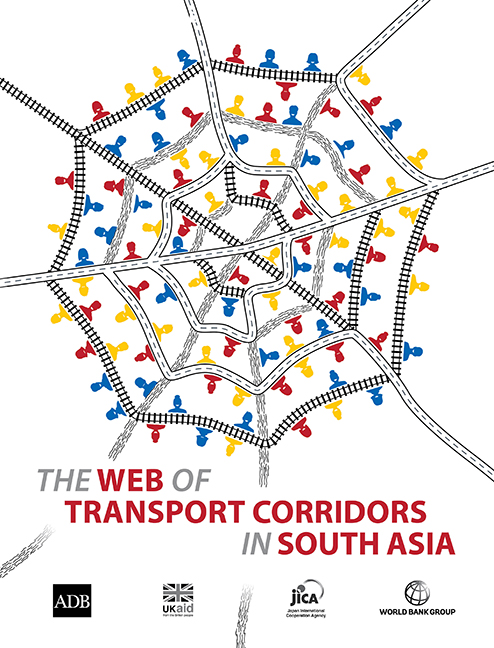The WEB of transport corridors in South Asia
 This book develops a holistic appraisal methodology to ensure that economic benefits of investments in transport corridors are amplified and more widely spread, and possible negative impacts such as congestion, environmental degradation, and other unintended consequences are minimized. It focuses on South Asia—not only as one of the world’s most populous and poorest regions—but as a hinge between East Asia, Central Asia, the Middle East, and Europe. The book is aimed at politicians, technocrats, civil society organizations, and businesses. It presents case studies of past and recent corridor initiatives, provides rigorous analysis of the literature on the spatial impact of corridors, and offers assessments of corridor investment projects supported by international development organizations. A series of spotlights examines such issues as private sector co-investment; the impacts of corridors on small enterprises and women; and issues with implementing cross-border corridors. The 'WEB' in the title stands for both the wider economic benefits (WEB) that transport corridors are expected to generate and the complex web of transport corridors that has been proposed. The appraisal methodology introduced in this book shows how the web of interconnected elements around corridors can be disentangled and the most promising corridor proposals—the ones with the greatest wider economic benefits—can be selected.
This book develops a holistic appraisal methodology to ensure that economic benefits of investments in transport corridors are amplified and more widely spread, and possible negative impacts such as congestion, environmental degradation, and other unintended consequences are minimized. It focuses on South Asia—not only as one of the world’s most populous and poorest regions—but as a hinge between East Asia, Central Asia, the Middle East, and Europe. The book is aimed at politicians, technocrats, civil society organizations, and businesses. It presents case studies of past and recent corridor initiatives, provides rigorous analysis of the literature on the spatial impact of corridors, and offers assessments of corridor investment projects supported by international development organizations. A series of spotlights examines such issues as private sector co-investment; the impacts of corridors on small enterprises and women; and issues with implementing cross-border corridors. The 'WEB' in the title stands for both the wider economic benefits (WEB) that transport corridors are expected to generate and the complex web of transport corridors that has been proposed. The appraisal methodology introduced in this book shows how the web of interconnected elements around corridors can be disentangled and the most promising corridor proposals—the ones with the greatest wider economic benefits—can be selected.
Related Content
- Delhi tops the country in fatal road accidents and in number of pedestrians and cyclists falling victim, says new CSE assessment
- Monthly Overview on State of Environment, Sri Lanka, December 2013
- Monthly Overview on State of Environment, Pakistan, December 2013
- ADB ready to assist BRT project
- Draft urban transport master plan for Colombo metropolitan region and suburbs
